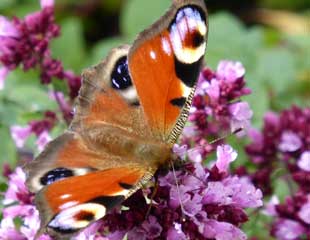
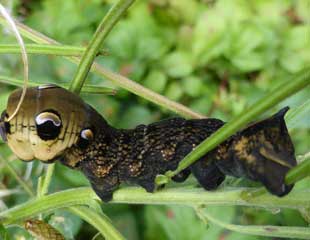

Plants for Butterflies
Butterflies in the garden are lovely to watch and there are many plants readily available which can really turn your garden into a haven for butterflies.
Planting a wide variety of plants and shrubs and providing nectar for a long season is a great start. There are many plants butterflies find irresistible. In addition, if you are happy with a garden which is not so tidy, perhaps supporting some weeds and wildflowers, this will also provide food for butterflies. And although as gardeners we may not be too keen on caterpillars, we cannot have butterflies without caterpillar. I took the image of Hawk moth catapillar, Deilephila elpenor, which likes rose bay willow herb considered a weed, but ideal caterpillar food.
It is hard to underestimate the pulling power of the buddleia, hence its common name, the Butterfly bush. I have watched in the garden on a warm summer day; the branches laden with scented flowers and butterflies.
Not sure what butterfly you have spotted? The Butterfly Conservation organisation has a handy guide to help you identify our native butterflies.
Many herbs are attractive to butterflies. This is apparent when walking round a herb garden on a warm day to meet where the buzz of insects and butterflies is audible. Butterflies love Oregano, image top left, Thymus, Borage, Nepeta cat mint, Chives, Hyssop, Lavender. A herb garden is a butterfly zone. and many herbs are very easy to grow.
There are a host of garden plants that will attract butterflies into the garden and plant with successive flowering times for the best results.

Lavender a great favourite with butterflies, and easy to grow in the right spot, which is sunny well drained soil on the dry side. As a Mediterranean plant, lavender will not tolerate winter wet. Lavender is a perennial although tending to need fairly regular replacement as it gets woody in later years.
If your soil or conditions are too wet an alternative to grow is Nepeta, (see below) common name Cat mint. For advice on How to grow Lavender
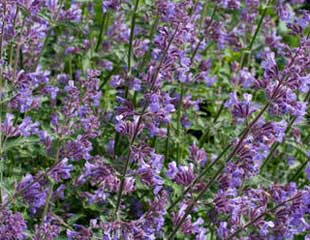
Unlike Lavender, Nepeta will grow just about anywhere which includes wet and cold conditions which are not suited to Lavender. Nepeta is also a perennial which produces clouds of blue flowers and is very attractive to bees and butterflies, but also cats.
It is very easy to grow for tips, advice and images on growing Nepeta common name Cat Mint
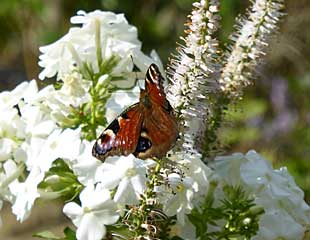
Veronicastrum and Veronica group of plants are attractive to butterflies. Easy to grow perennials, fully hardy will grow in full sun and partial shade. They are tall plants up to 2m and so best grown at the back of the border.
I have seen them planted on mass at RHS garden, covered in butterflies and pollinators.
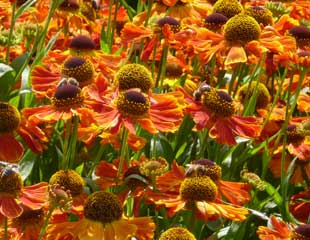
Heleniums are a group of clump forming perennials with open daisy-like flowers which are attractive to butterflies. Heleniums flowers are predominately red, orange, yellow and shades in between, and are easy to grow in a sunny position.
Heleniums are summer flowering and when planted on a good sunny site will flower for many weeks. Taller varieties may require staking and regular dead heading to prolong flowering.
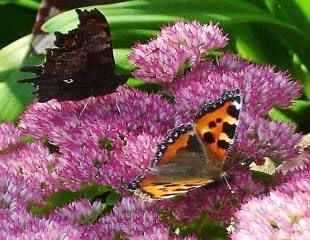
Sedums are a butterfly's friend. Flowering in late summer and early autumn, they are attractive to butterflies providing a late summer source of nectar. Sedums are really easy to grow and make a great addition to the border.
Sedum will attract all types of pollinators, including a good number of butterflies. In the late summer, a good clump of sedum can have half a dozen butterflies on it at any time. I have them planted up in a wall near the pond so I can sit and watch the butterflies and pond life. Here is the video to prove it.
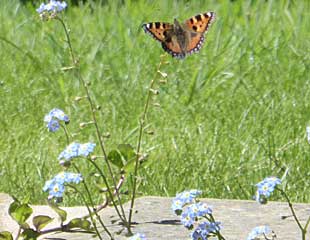
Myosotis, the simple forget-me-not, is a source of early nectar for butterflies flowering from late March/ April onwards depending on the conditions. Forget-me-not is easy to raise from seed and will self seed around the garden. It is sometimes considered a semi weed and a bit of a nuisance, but not buy the butterflies.
Forget-me-nots are worth growing as they produce clouds of lovely blue flowers early in the year, which mix in well with lots of spring bedding, and bring in the butterflies.
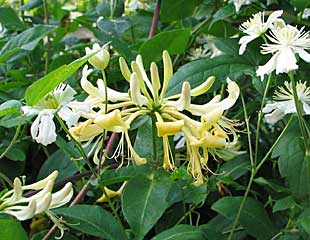
Lonicera, the common honeysuckle, is good to grow for Butterflies. It is also one of the most attractive scented climbing plants, which is easy to grow and will provide nectar for the Butterflies and later, berries for the birds.
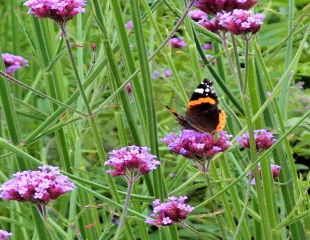
Verbeba borariensis is a summer flower perennial which Butterflies love.
It is a striking plant grown on mass, easy to grow, and tall up to 2ms but does not usually require staking and goes very well with so many garden plants . It can tend to be short lived as it is ** hardy which makes it susceptible in a bad winter.
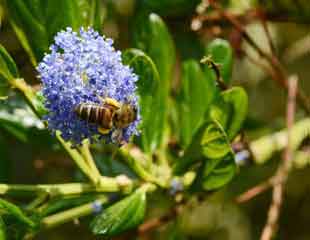
Both Bees and butterflies are attracted to the Ceanothus shrub which has very striking blue flowers in either Spring or Autumn, depending on the variety. Ceanothus does need particular growing conditions to do well, principally not too cold and in a sheltered spot. For advice on How to grow Ceanothus.
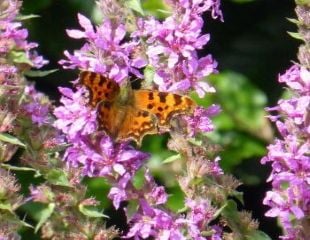
This looks similar, but it is in fact Purple Loosestrife. In my opinion, the more handsome cousin of Yellow Loosestrife. It is an upright plant, with spires of purple flowers very attractive to butterflies. If you are looking for a wildlife friendly plant for a damp area, alongside a stream or pond, Purple loosestrife is ideal.
It is a (non native ) wildflower and can be vigorous in the right growing conditions.
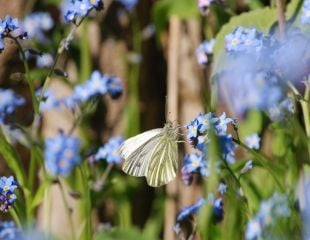
The simple forget-me-not will attract its fair share of pollinators and butterflies. It has the bonus attraction of being in flower early in the year when a shortage of nectar plants which the butterflies need to feed on.
Although the flowers are small, they are a good source of early nectar. Easy to grow, self seeding biennials.
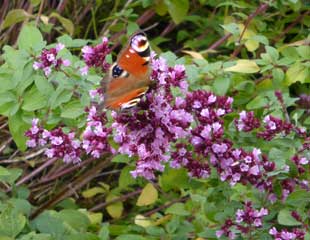
The Butterflies just love Oregano and will flock to it. Oregano is easy to grow, a Mediterranean herb, but not not one which is fussy where it grows, although the more sun the better. The downside is that Oregano is a self seeder, and once you have one plant, you will have more.
To keep it in check, it is essential to pull out new seedings where they root.
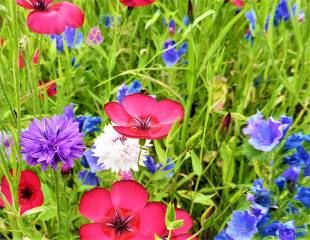
Many of our annual flowers and wildflowers are good for butterflies, and bees, such as Cornflower (illustrated) also Daisy, Pot Marigold, Red Campion, Nasturtium , Buttercups and Heliotrope. It is easy to create a small wildflower patch of annual to look lovely and benefit the butterflies illustrated below.
